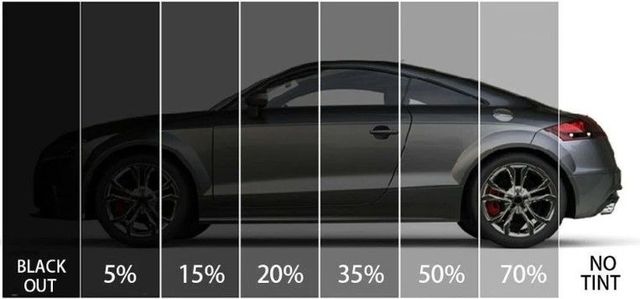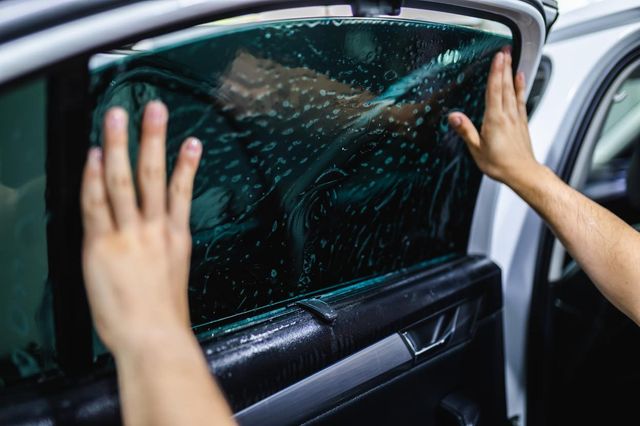Automobile Window Tinting: An Overview to Selecting the Perfect Shade
Automobile Window Tinting: An Overview to Selecting the Perfect Shade
Blog Article
Window Tinting Regulations and Guidelines: What You Required to Know Prior To Tinting Your Vehicle
Prior to waging home window tinting for your vehicle, it is important to familiarize yourself with the diverse regulations and standards that regulate this technique throughout different states. These regulations dictate the allowable degrees of tint darkness, usually determined by visible light transmission (VLT) percents, and consist of specific specifications for front windshields intended at ensuring road security. Furthermore, specific territories might provide medical exemptions for individuals with qualifying problems. Understanding these intricacies can save you from possible legal implications, yet what are the specific policies in your state?
Overview of Home Window Tinting Rules
Window tinting laws are regularly subject to variant across various jurisdictions, mirroring regional laws and safety and security considerations. These laws determine the allowable levels of tint darkness and reflectiveness on lorry home windows, guaranteeing that drivers keep sufficient presence while likewise shielding against dangerous UV rays and warmth.
Many policies classify home window tinting based on the Visible Light Transmission (VLT) portion, which indicates the quantity of light that can go through the window. Generally, lower VLT percentages symbolize darker tints. Regulations frequently separate between the front, side, and back windows, with more stringent restrictions applied to the front windshield to boost safety and security for both the motorist and other roadway individuals.
Furthermore, some jurisdictions enforce constraints on the reflectivity of the color, preventing too much glare that could impair visibility. Exemptions to these regulations might exist for people with certain clinical conditions requiring added sun defense. Compliance with home window tinting policies is vital, as infractions can cause fines, necessary elimination of the tint, and potential boosts in insurance policy premiums. It is essential for automobile owners to familiarize themselves with local regulations before proceeding with home window tinting setups.
State-by-State Color Laws
Comprehending the particular window tinting laws in each state is vital for car owners seeking to adhere to the regulation. Each state in the united state has actually developed its very own collection of regulations governing window tinting, which can vary dramatically. These laws frequently determine the allowable levels of color darkness, the kinds of home windows that can be tinted, and any clinical exceptions that may use.
For example, states like The golden state have rigid constraints on tint darkness for front home windows, while others, such as New Mexico, might permit darker tints. In addition, certain states mandate details exposure portions for numerous home windows, consisting of the windscreen, front side home windows, and back windows. It is critical for automobile owners to familiarize themselves with their state's legislations to avoid possible penalties or penalties.
Additionally, some states may need a certification sticker label to be positioned on colored windows, suggesting compliance with state legislations. Failing to stick to these guidelines not just takes the chance of lawful consequences however can likewise influence security and visibility while driving. Therefore, car owners must conduct comprehensive research study or seek advice from regional authorities to ensure complete understanding and compliance with state-by-state color regulations.
Allowed Color Levels and Kinds
Numerous automobile proprietors might be stunned to discover that permitted color degrees and types vary widely throughout various states. Each state has actually developed its very own guidelines pertaining to the permissible darkness and reflectivity of home window color, frequently determined by Visible Light Transmission (VLT) percentages. VLT refers to the amount of light that can pass through the colored windows; hence, a reduced portion suggests a darker tint.

Furthermore, the kinds of tint materials enabled can differ, with some states banning mirror-like or metallic surfaces. It is essential for car proprietors to familiarize themselves with their state's particular laws to ensure conformity. Non-compliance can lead to fines, compulsory removal of the tint, or other lawful effects, making it imperative to understand these policies before waging setup.
Medical Exceptions for Tinting
While not all states give anonymous allocations for medical exceptions pertaining to home window tinting, those that do acknowledge the requirement for certain individuals to improve visibility and comfort as a result of clinical problems. Different clinical problems, such as lupus, skin cancer, and particular eye conditions, can render individuals particularly conscious sunshine. These people may need darker tints to safeguard themselves from damaging UV rays and glow.

It is essential to note that also with a medical exemption, there may still be constraints on the degree of tint permitted. Compliance with state laws makes certain that people are both protected and within lawful limitations. Those considering clinical exceptions need to call their regional Division of Motor Cars or comparable authority to comprehend the requirements and treatments essential to look for an exception efficiently.
Fines for Non-Compliance
Stopping working to adhere to home window tinting regulations can result in considerable charges, which vary by state. Police are equipped to release citations for cars that do not stick to the defined tinting regulations. These penalties normally consist of penalties, which can range from modest total up to a number of hundred bucks, depending on the severity of the violation and the state in concern.
In some jurisdictions, repeated offenses might lead to escalating penalties or added fines, such as obligatory court appearances. Moreover, non-compliance may demand the removal of prohibited tinting, typically at the owner's cost. In severe go to this web-site instances, habitual offenders may deal with suspension of their lorry registration till compliance is accomplished.
Additionally, insurance effects might occur from receiving numerous citations for window tint offenses. Insurance providers may see such violations as an indication of riskier actions, potentially bring about boosted premiums or trouble in coverage.
To stay clear of these fines, it is vital for lorry owners to familiarize themselves with their look what i found regional home window tinting regulations and ensure that their vehicle complies (Window Tinting). This proactive strategy not only prevents lawful ramifications but additionally advertises road safety
Final Thought

The majority of guidelines categorize home window tinting based on the Visible Light Transmission (VLT) portion, which indicates the quantity of light that can pass via the home window. Compliance with window tinting policies is vital, as infractions can result in fines, compulsory removal of the tint, and possible boosts in insurance premiums.Understanding the particular home window tinting regulations in each state is essential for vehicle owners seeking to conform with the legislation. These regulations usually determine the allowed degrees of tint darkness, the types of windows that can be tinted, and any kind of clinical exemptions that might use.
For circumstances, states like The golden state have rigid constraints on color darkness for front windows, while others, such as New Mexico, might enable darker colors.
Report this page